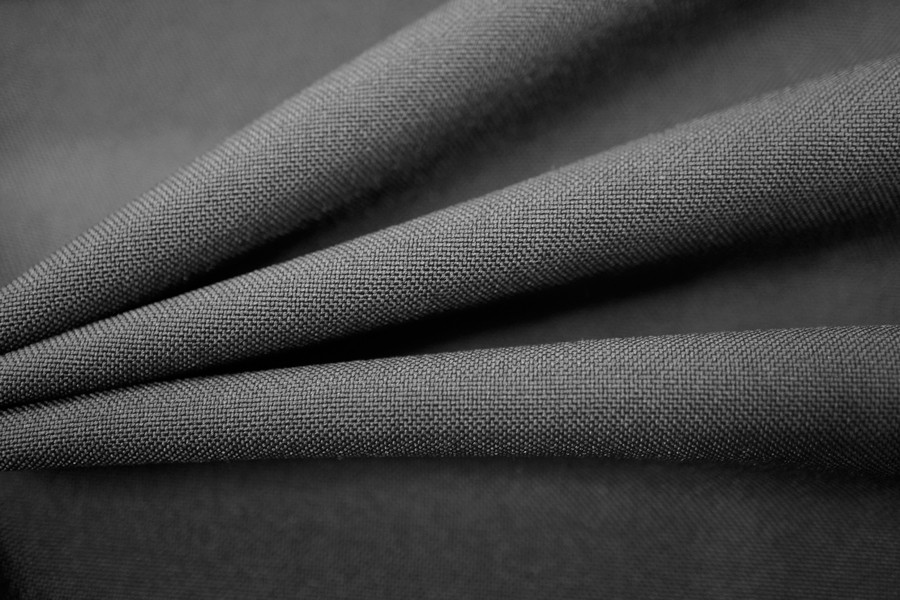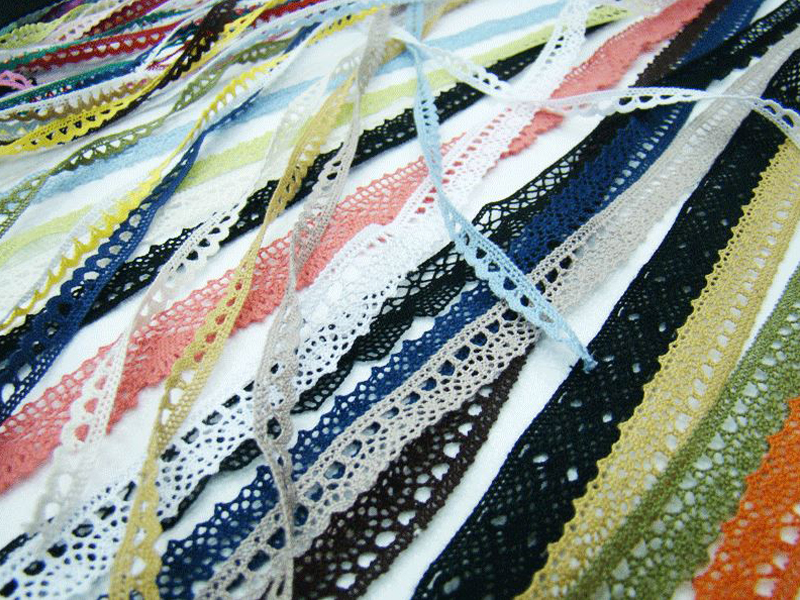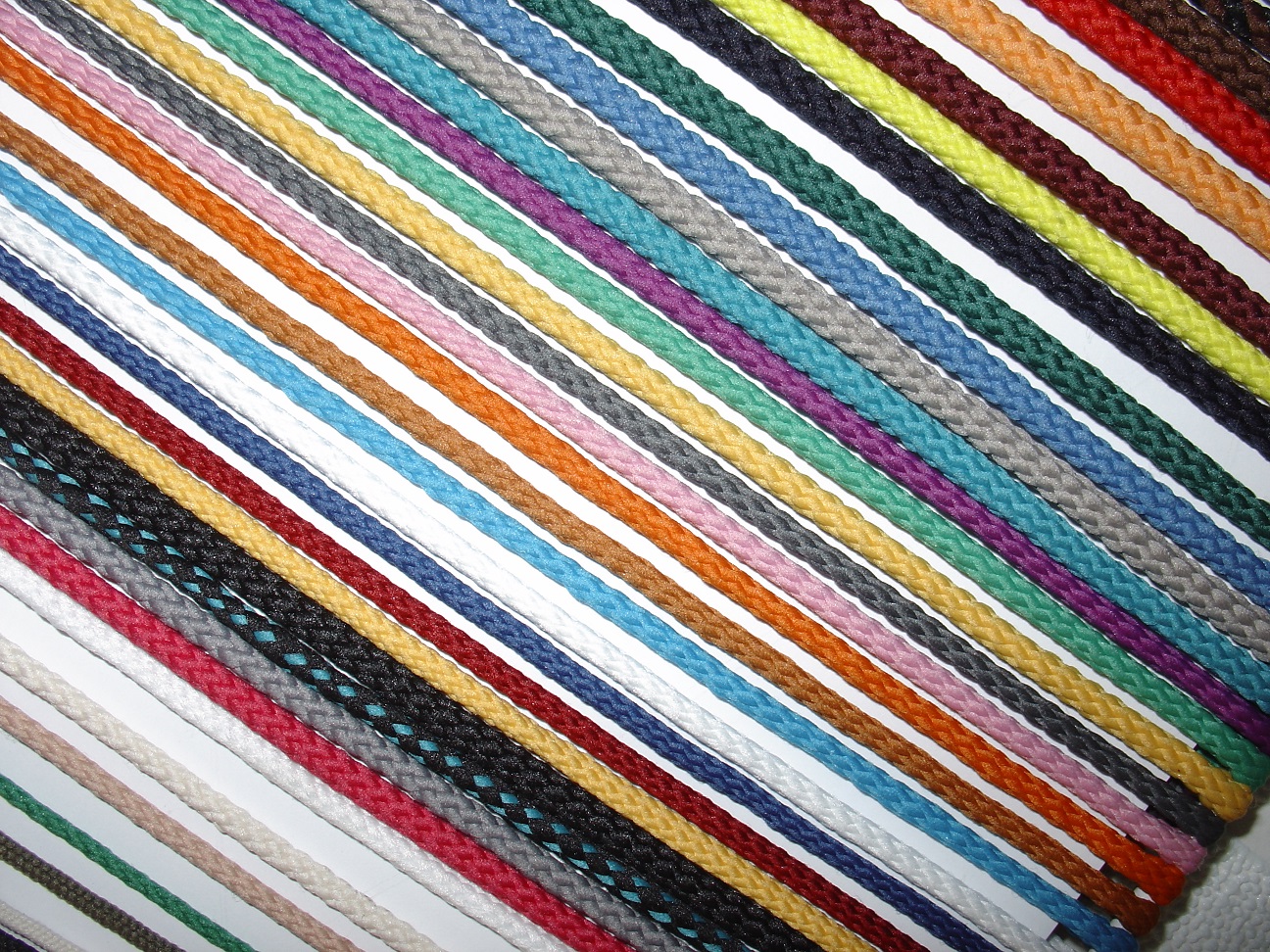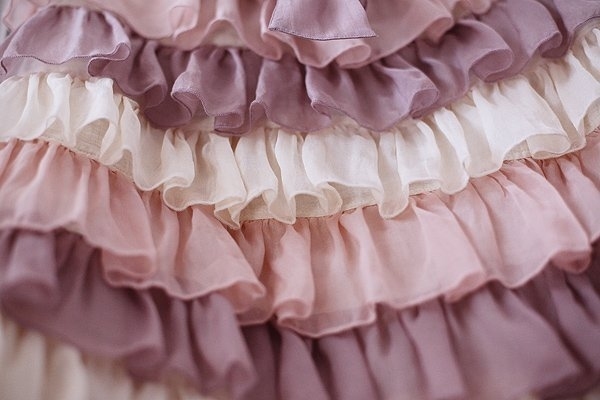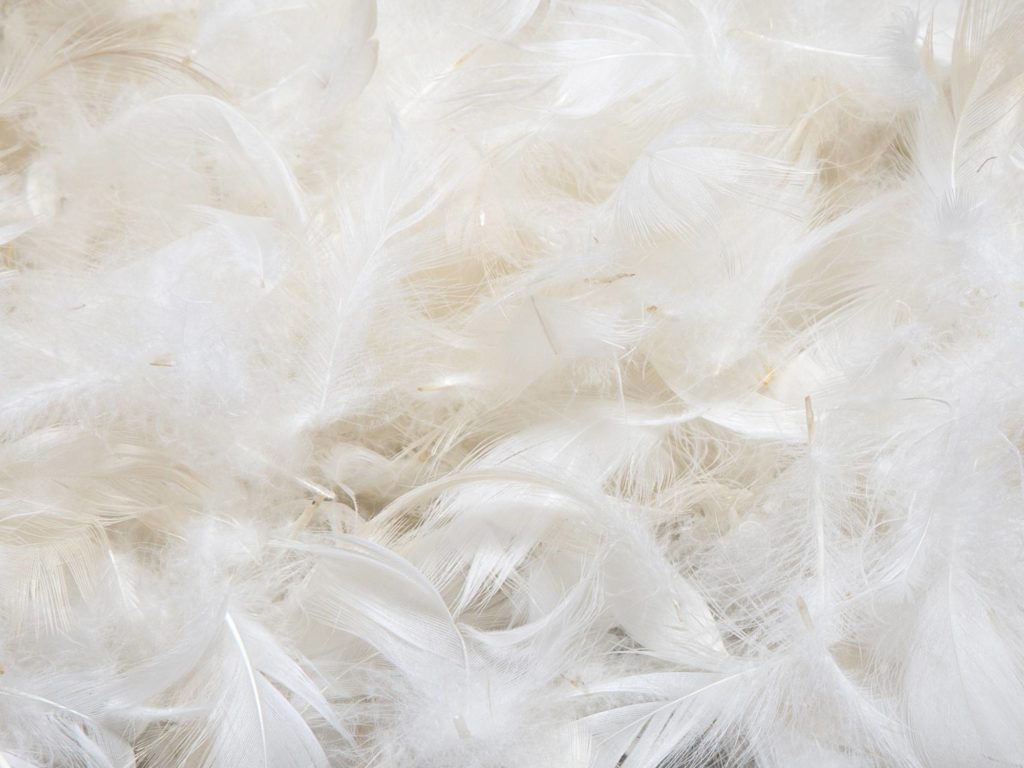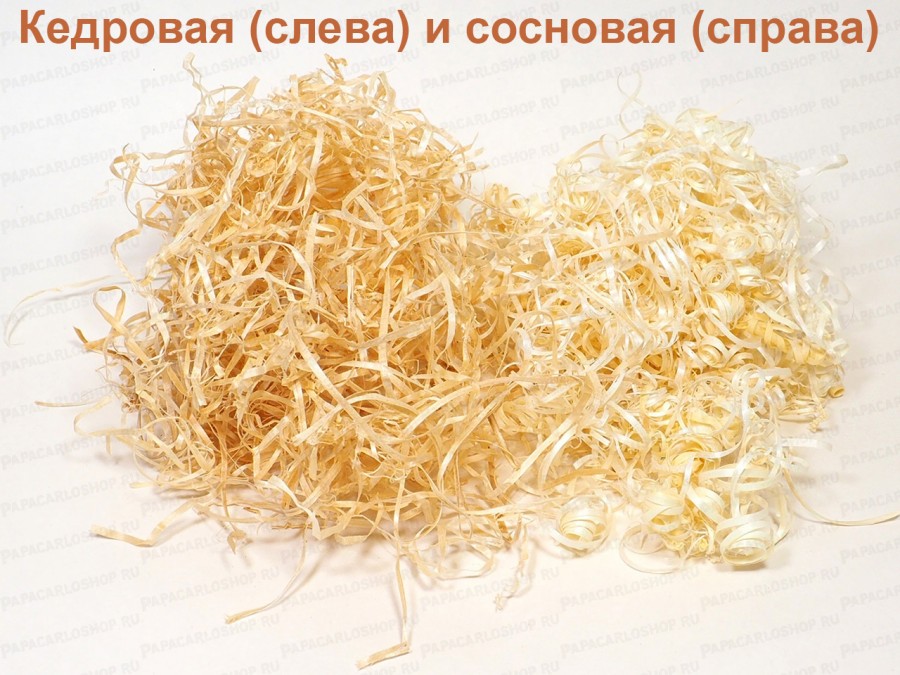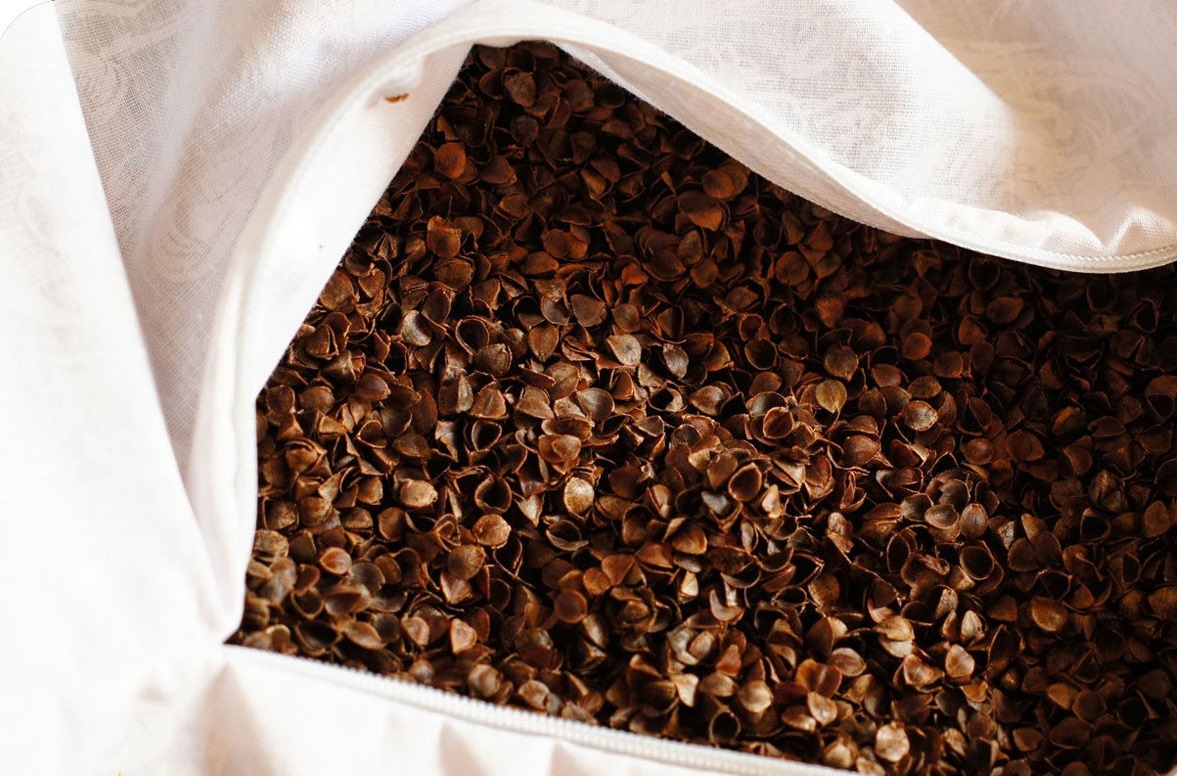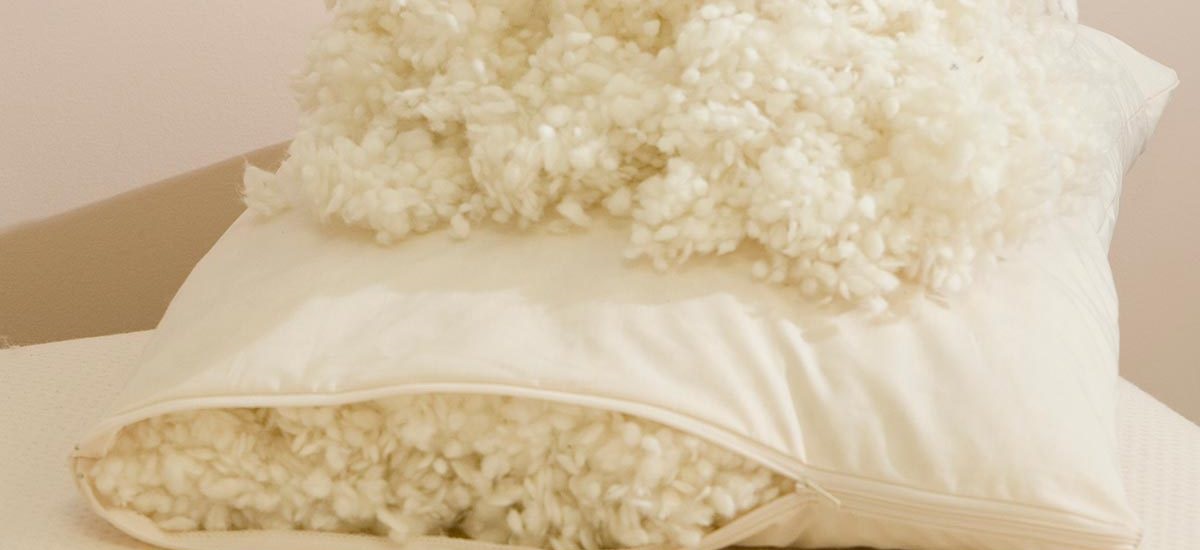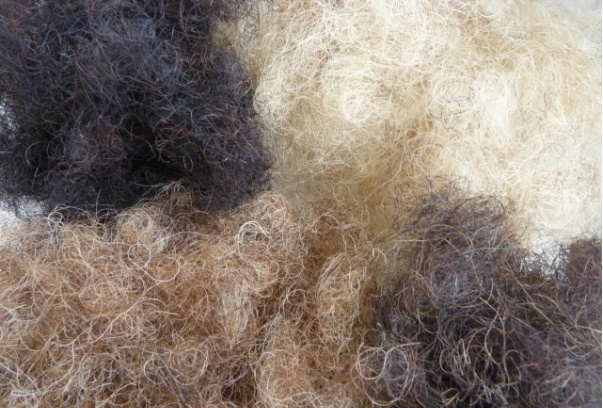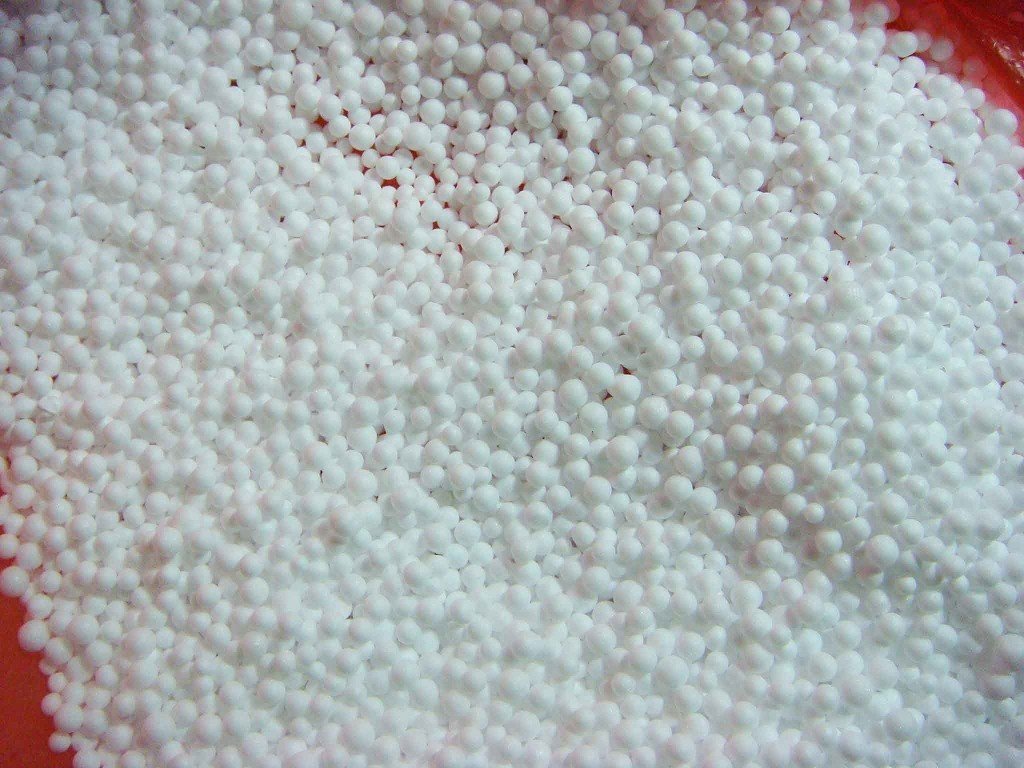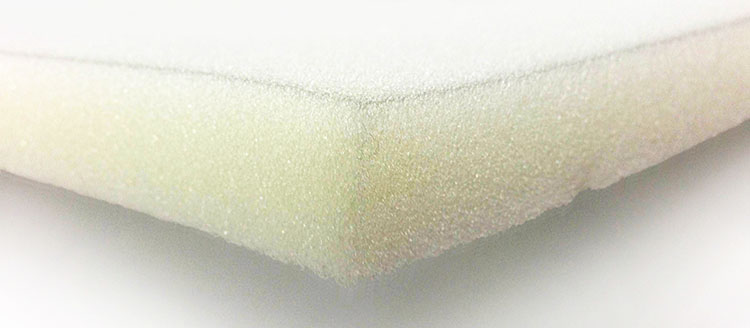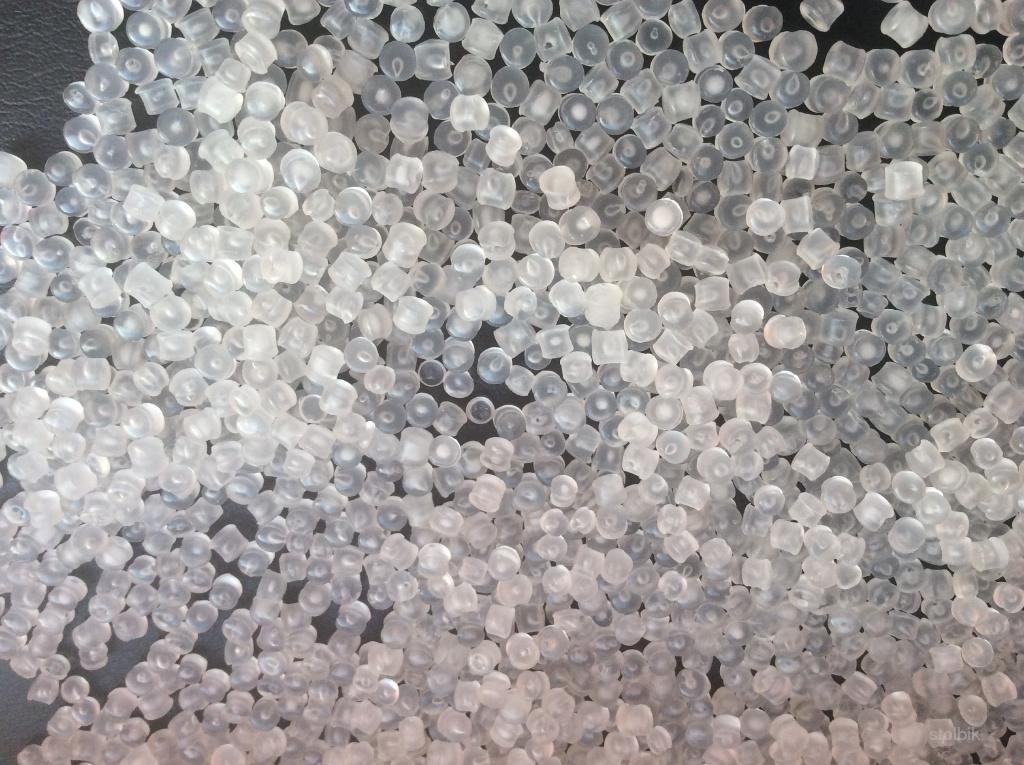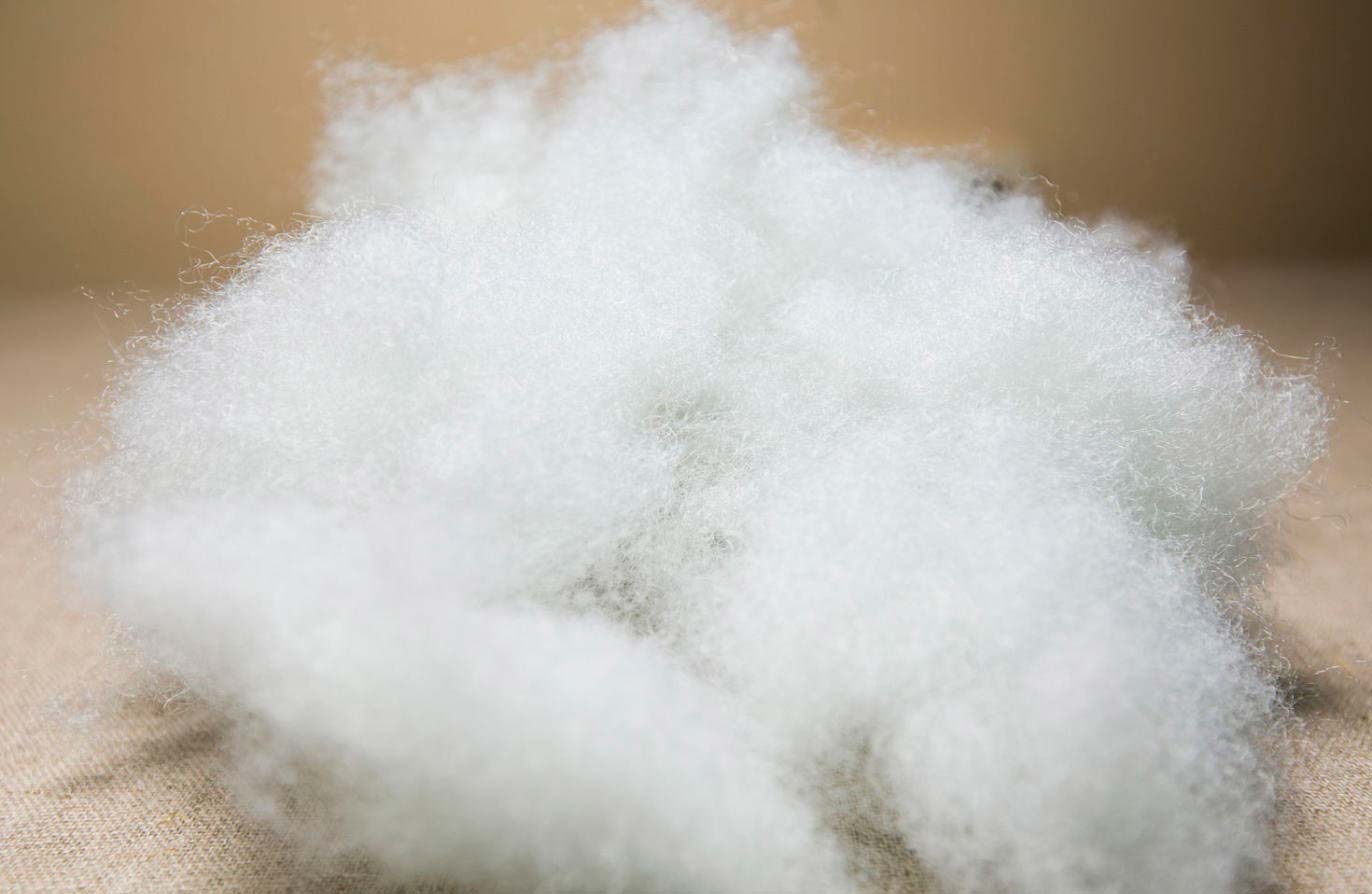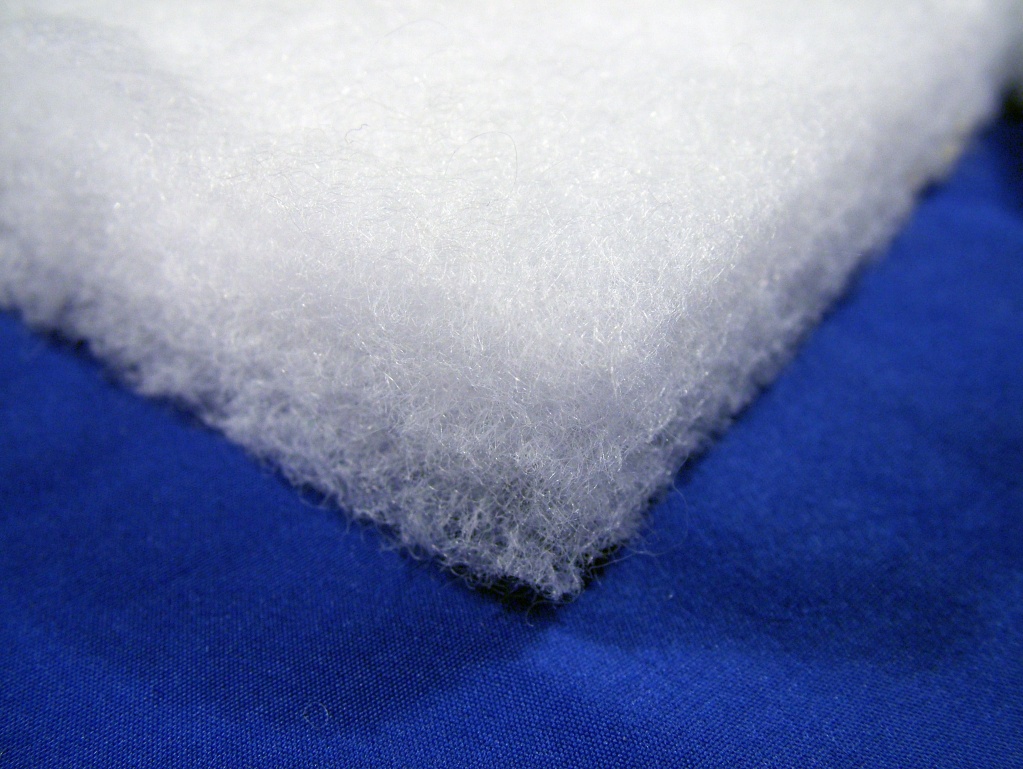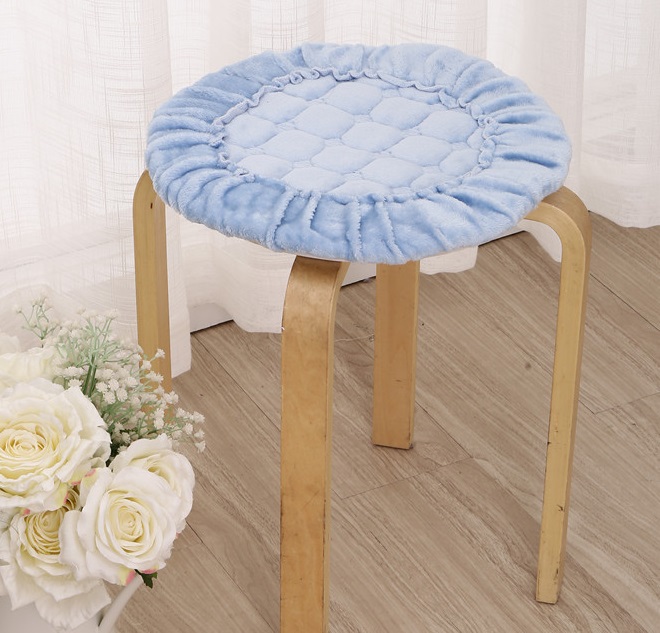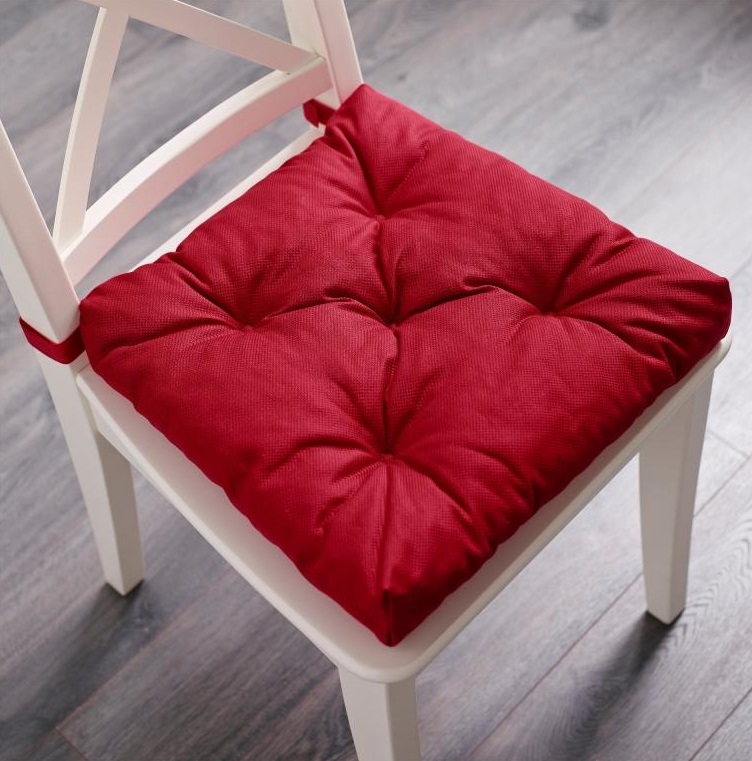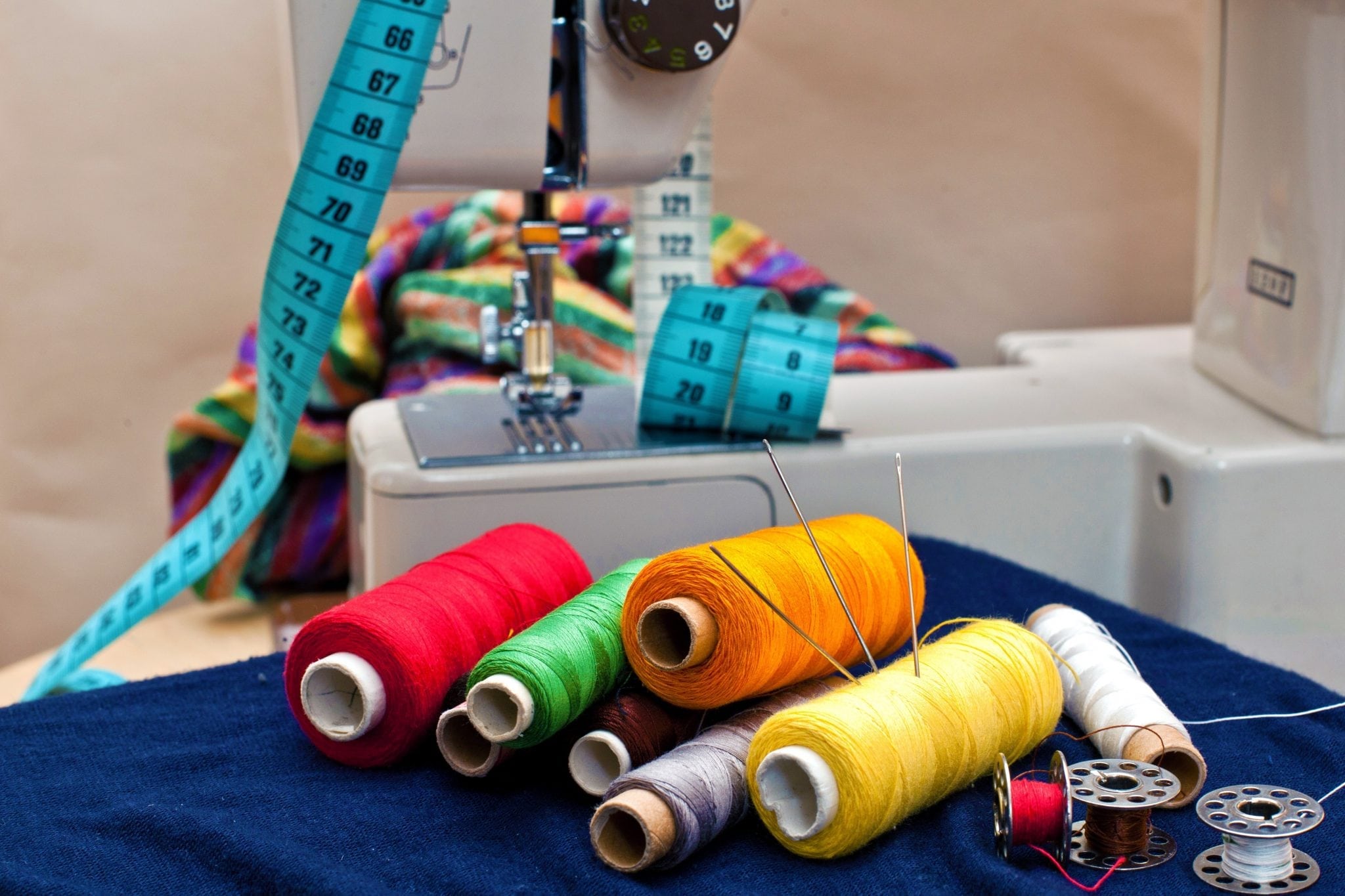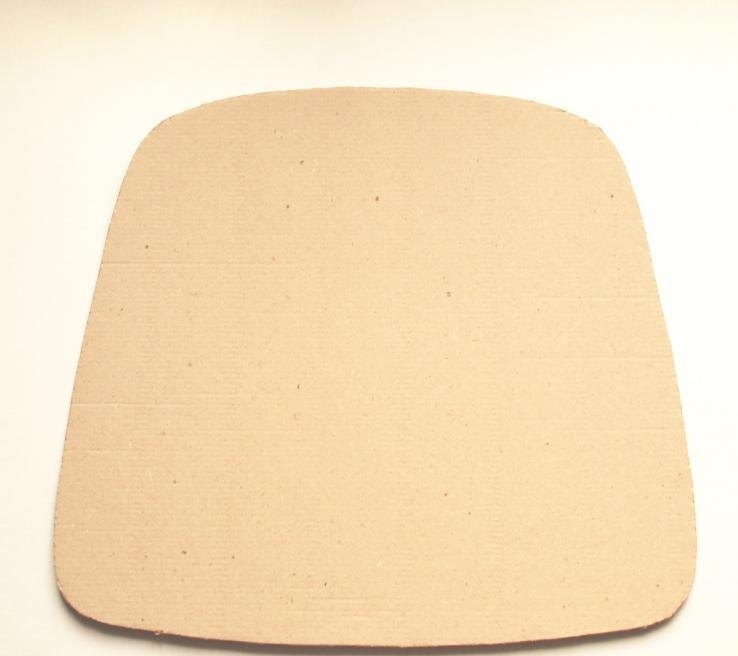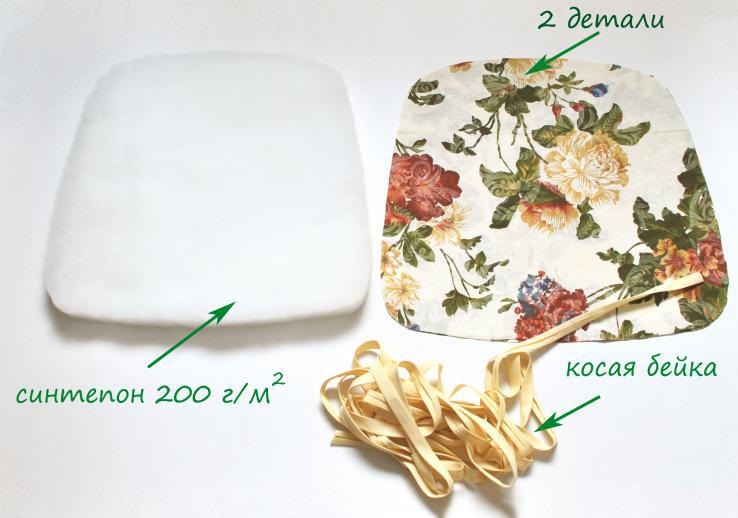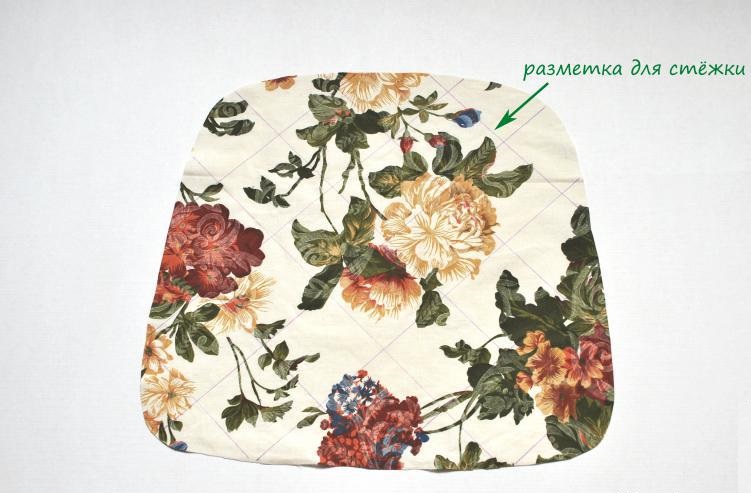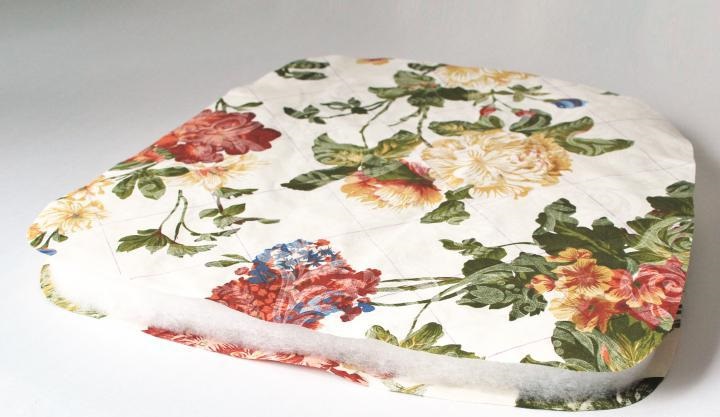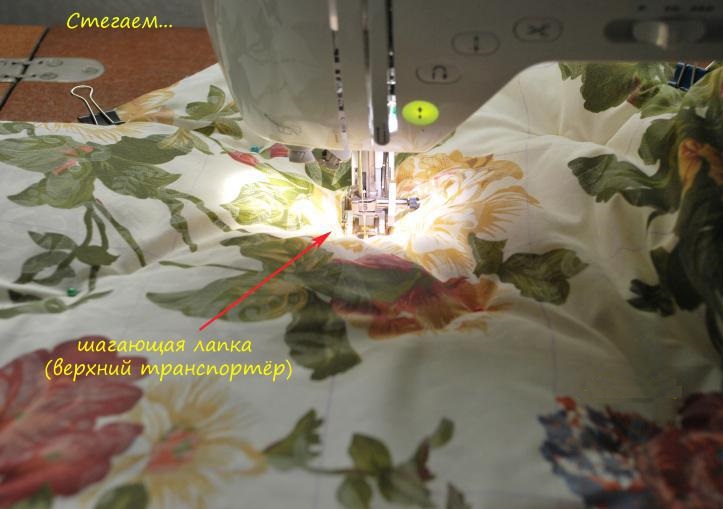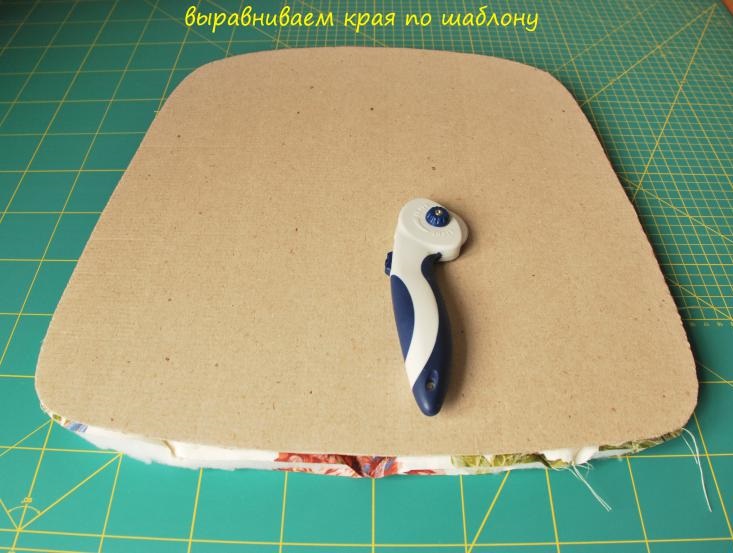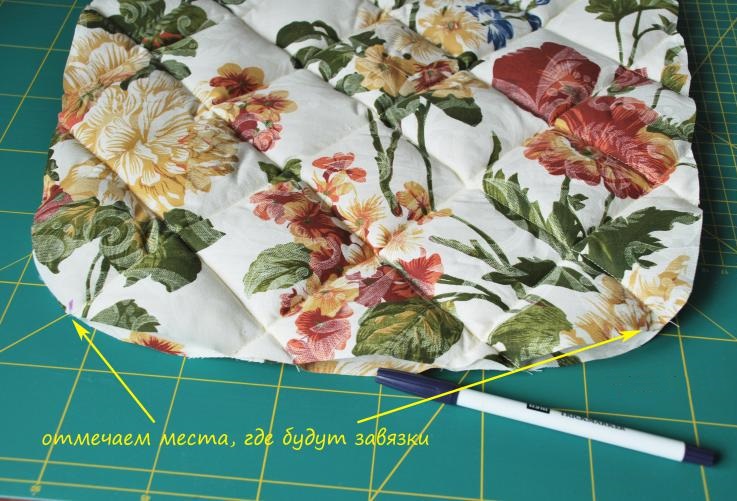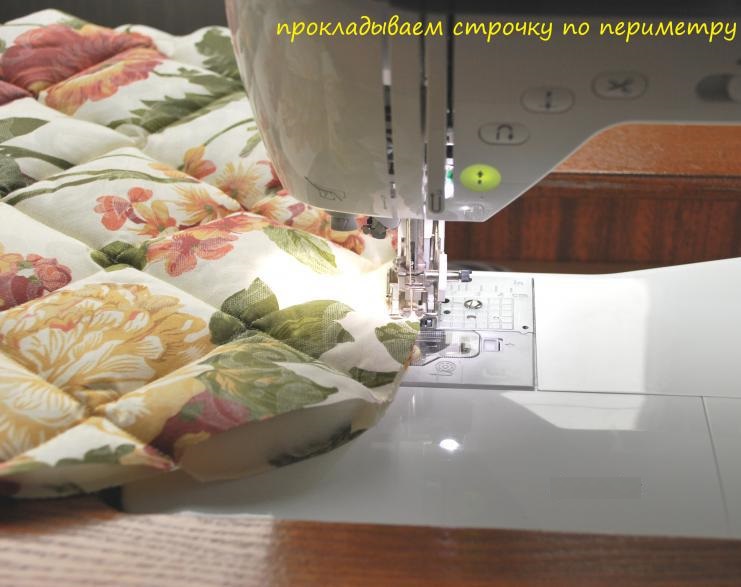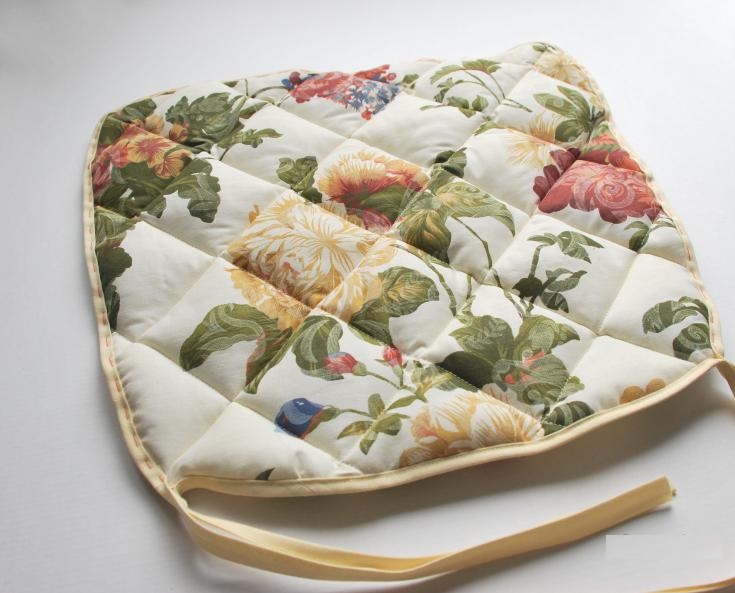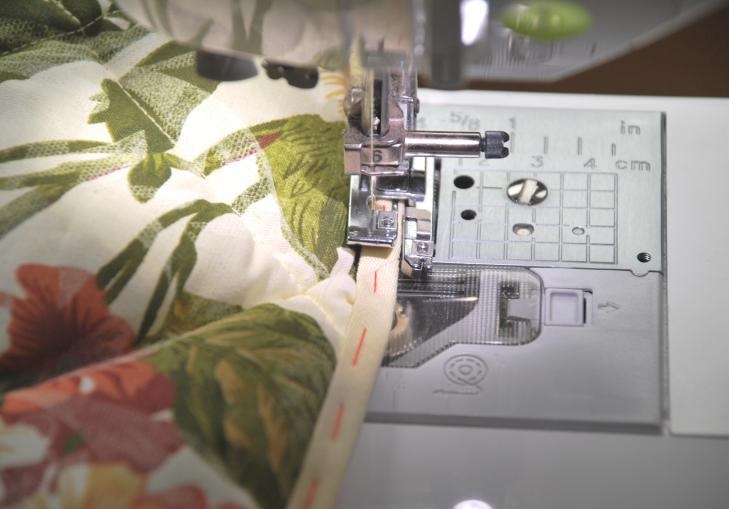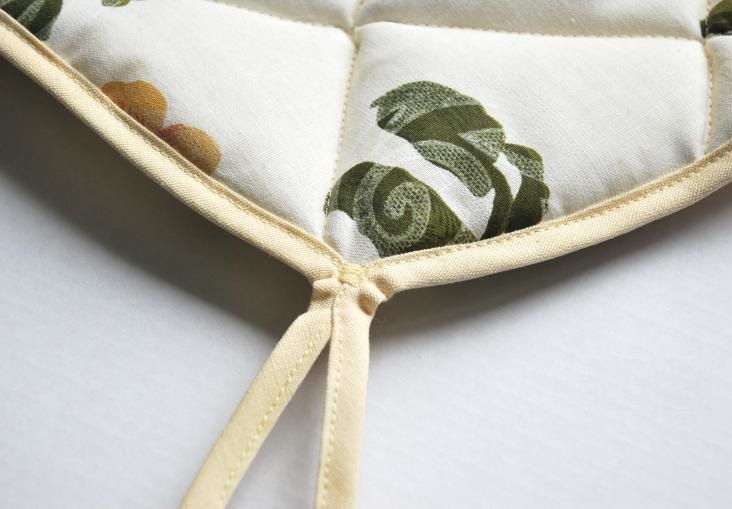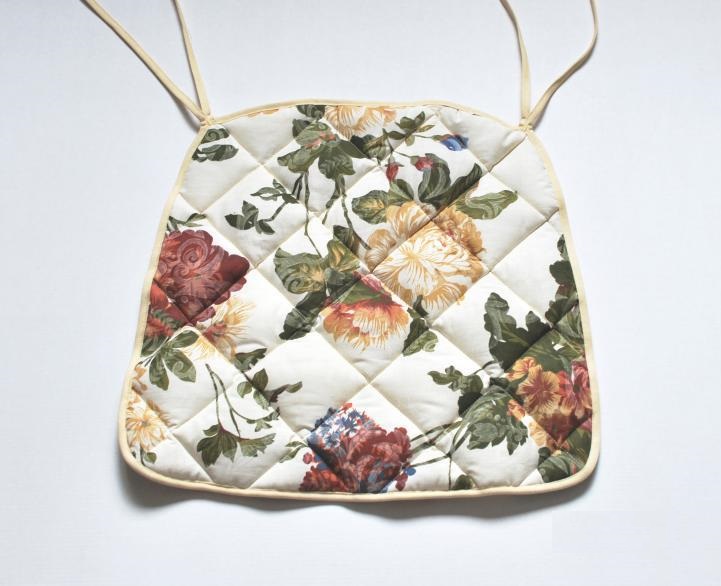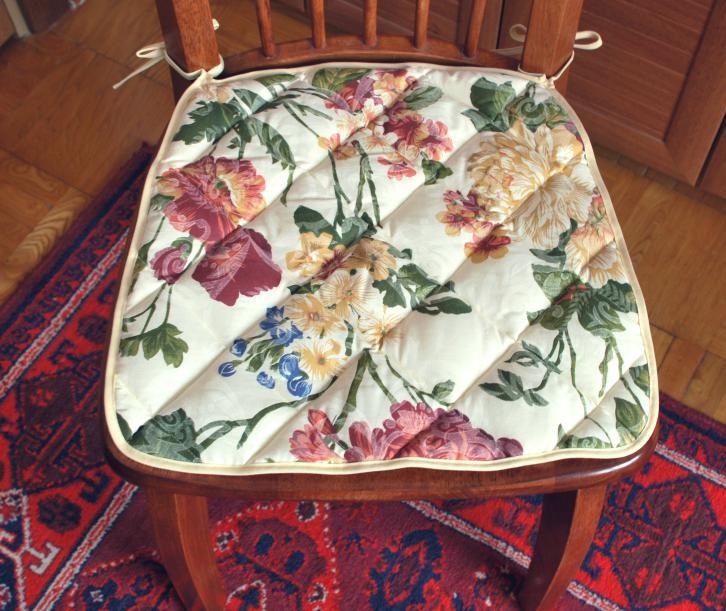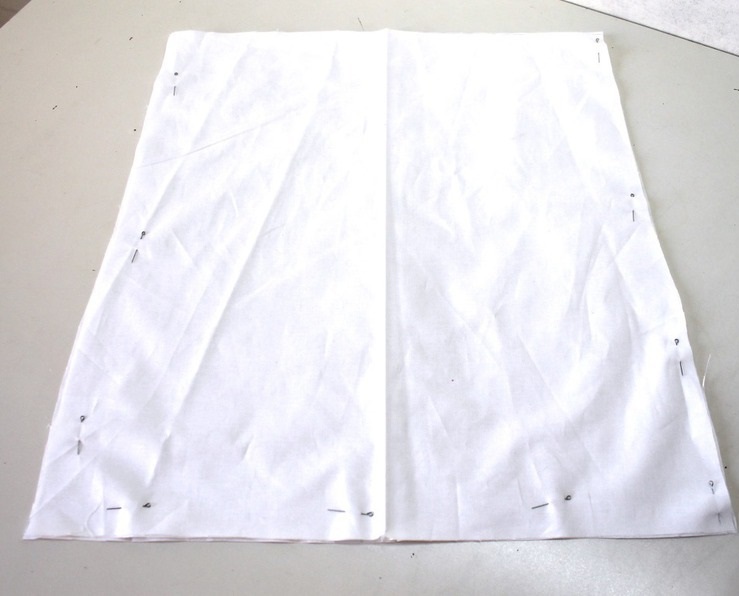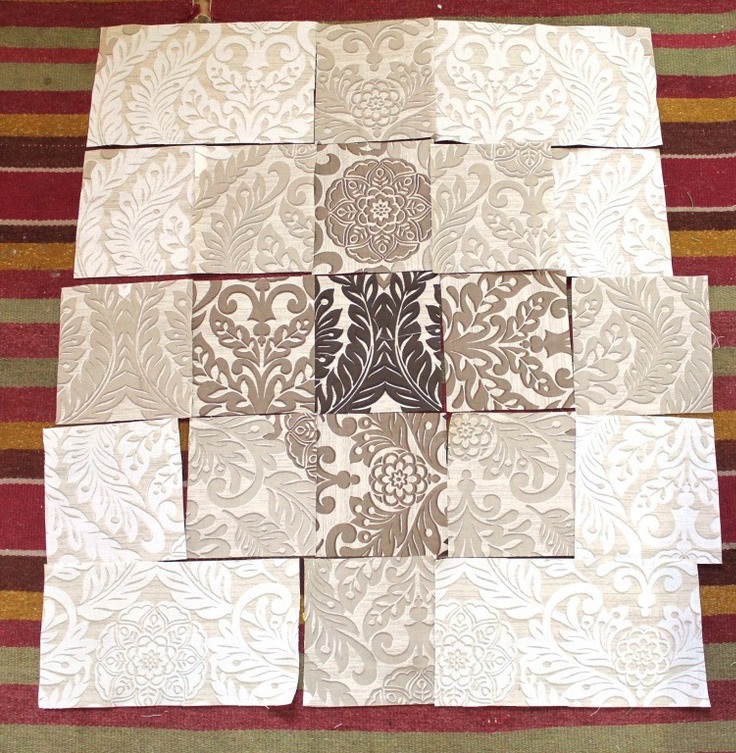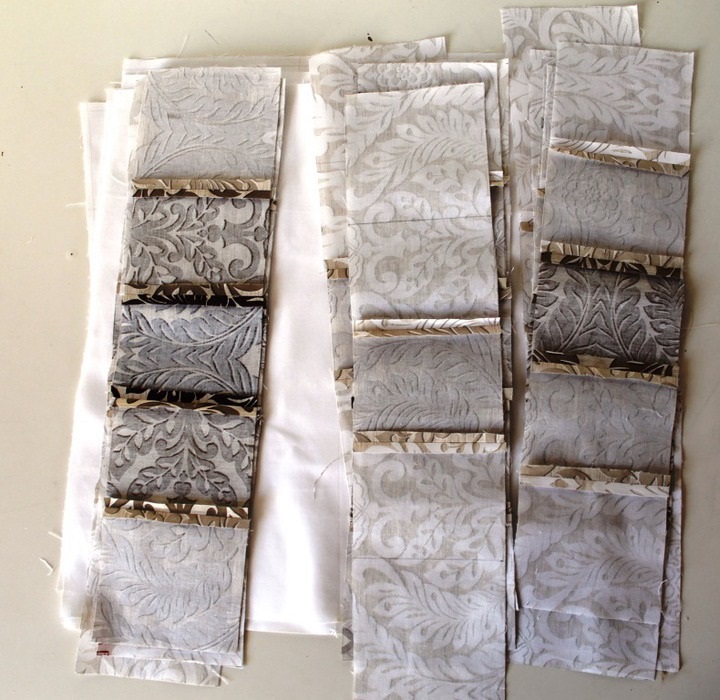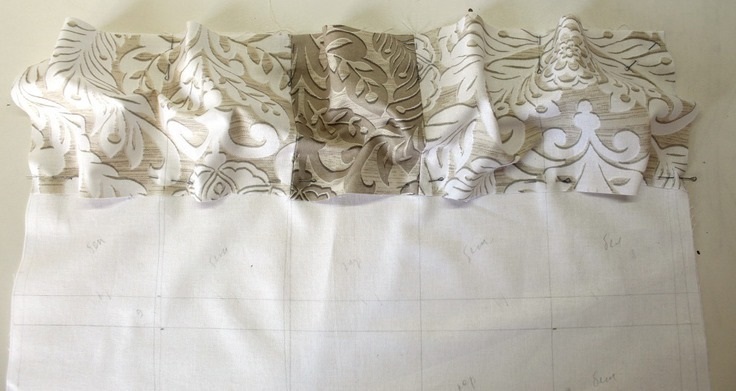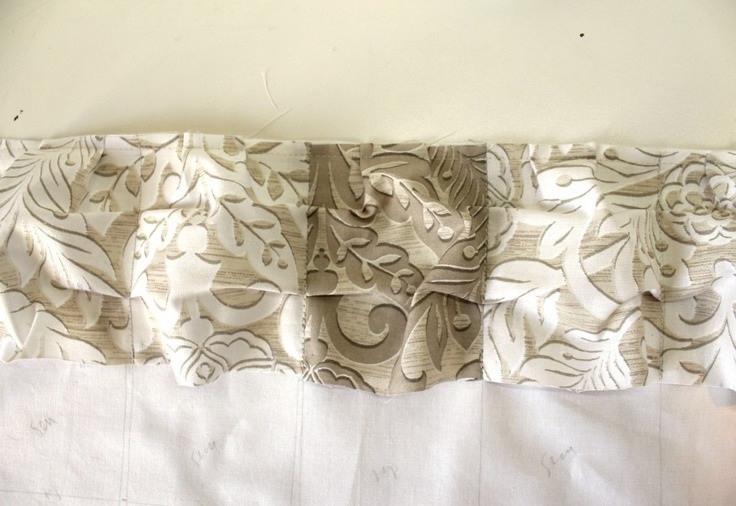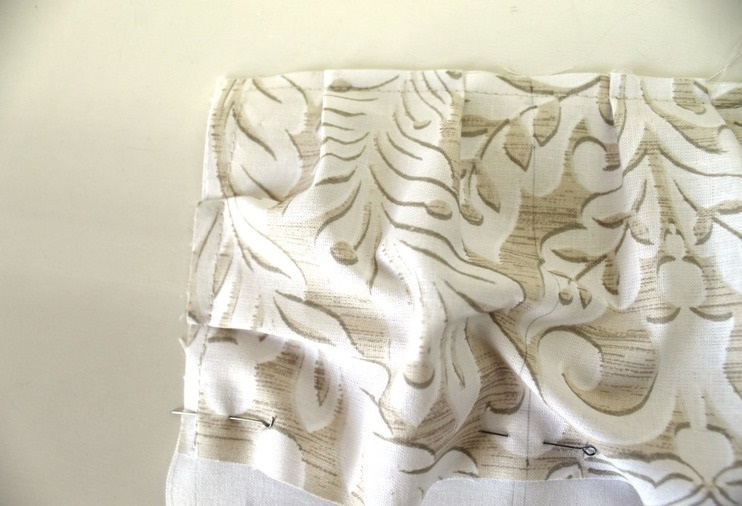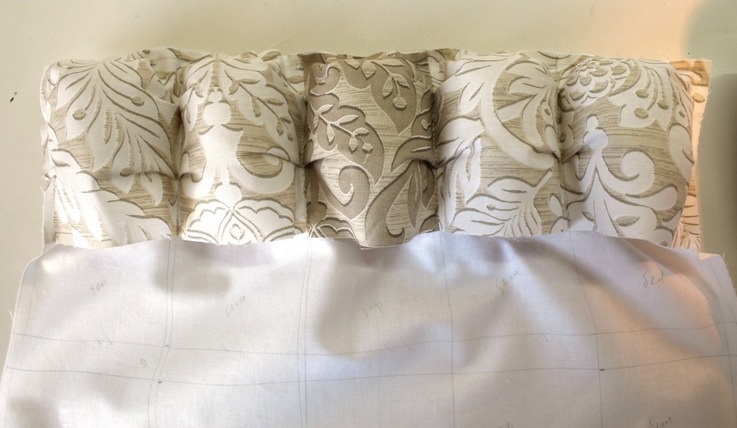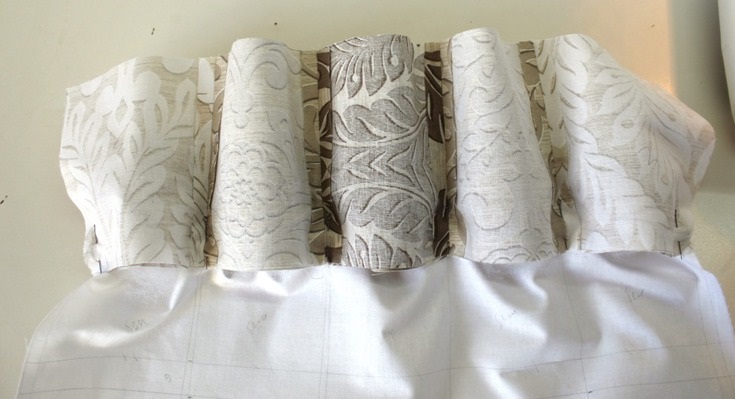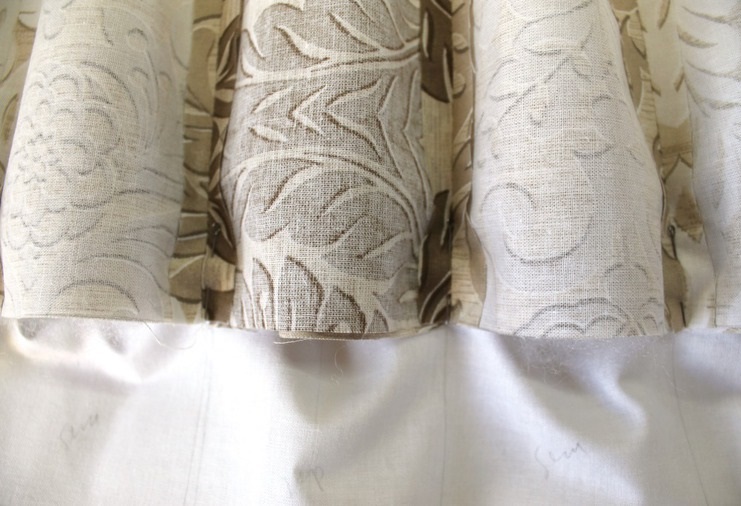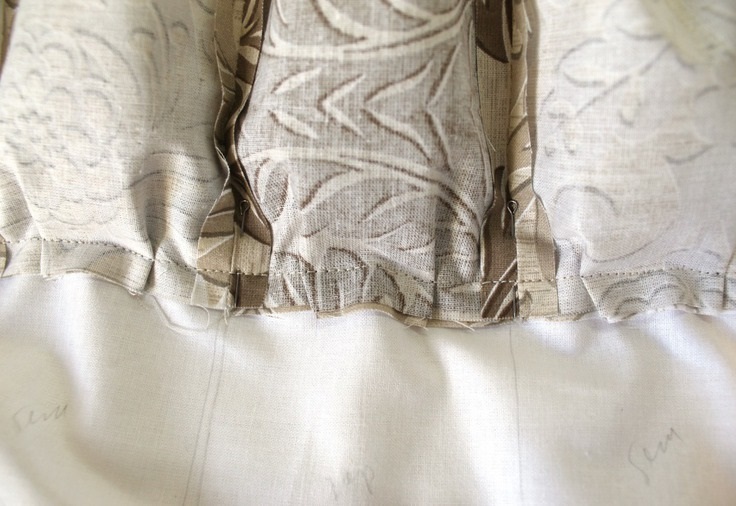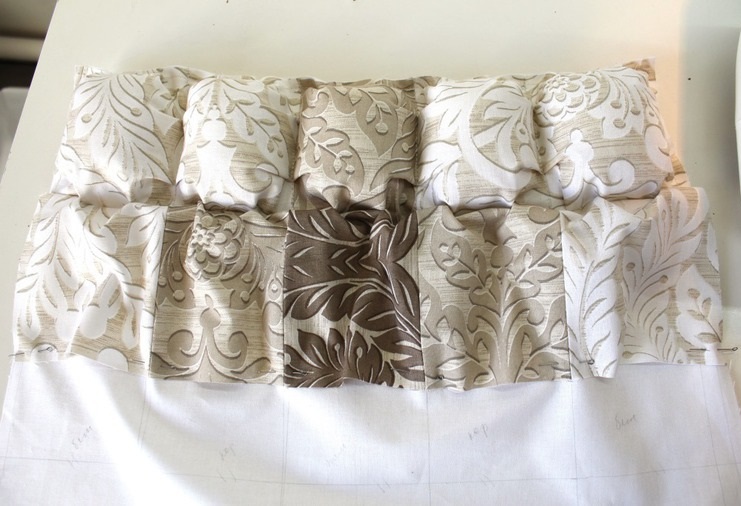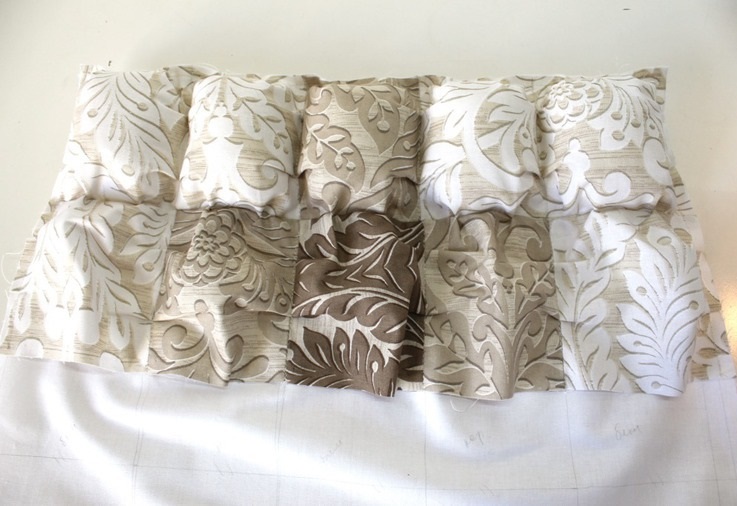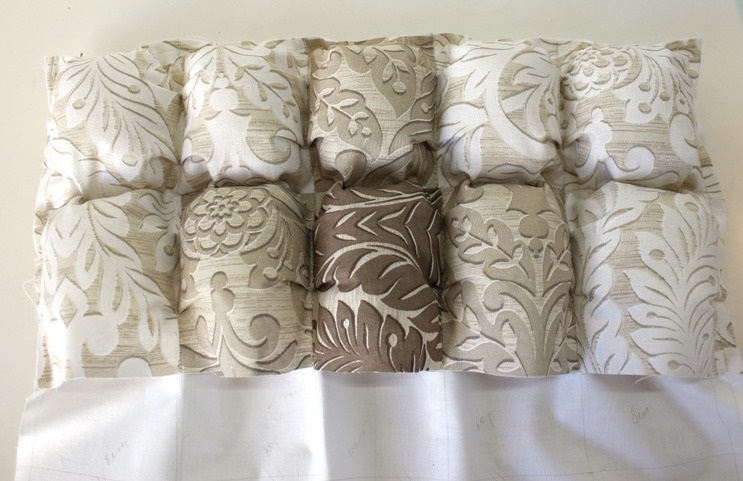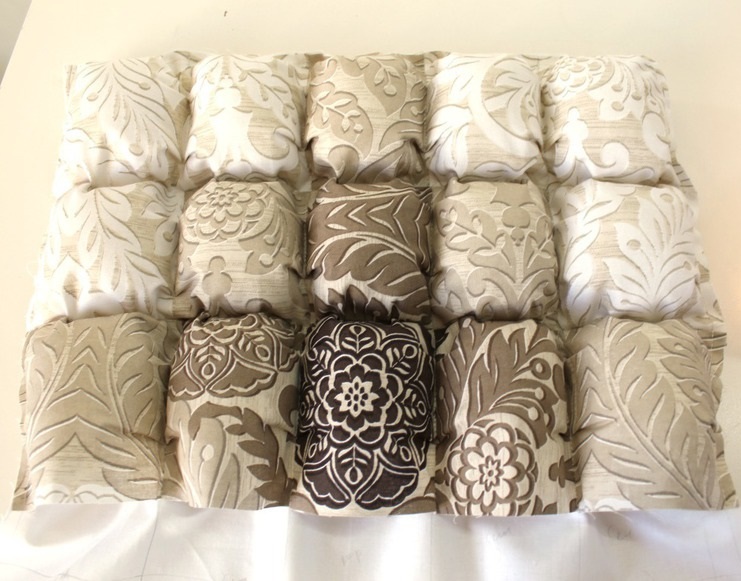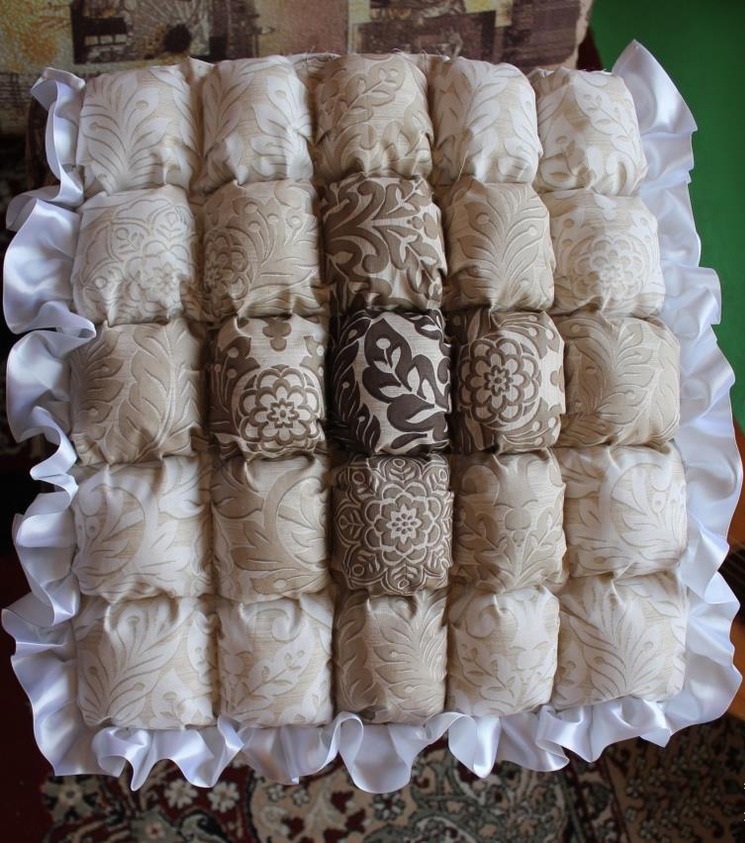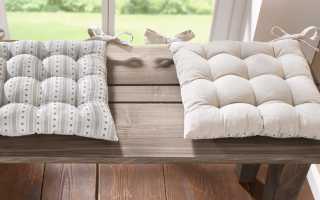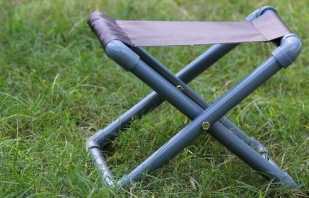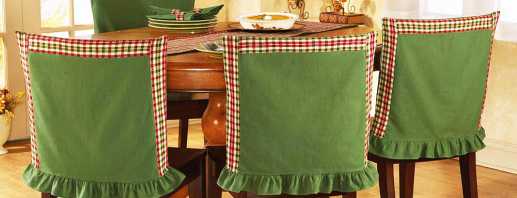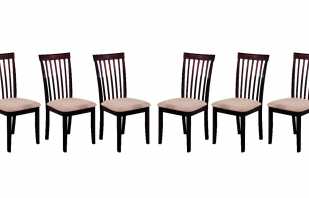How to make seats on chairs with your own hands, a master class with a photo
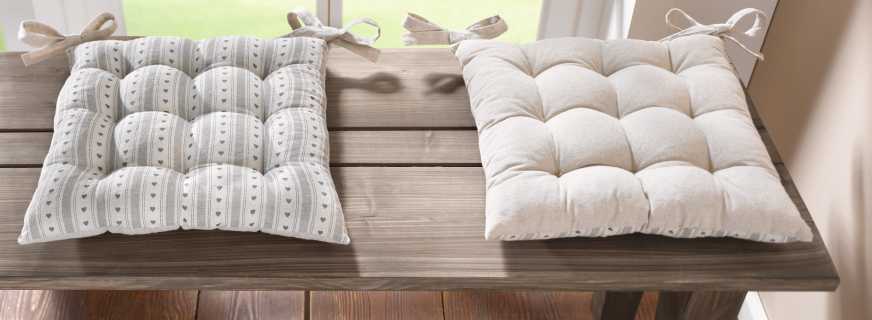
The interior of any room without textile elements looks uncomfortable. To create a home-like atmosphere, everyone can make original seat seats for chairs with their own hands, choosing the appropriate fabrics. The choice of textiles and decor depends only on the taste preferences of the owner of the apartment or house.
Content
Material selection
The textiles on the chair cushions should be selected taking into account the maximum resistance to moisture, low or high temperatures, direct sunlight. These factors are important, because the seats can be used not only for home furniture, but also for gardening.
the cloth
It is worth noting that not all materials are suitable for making pillows for a chair with your own hands. The fabric for the future seat should be pleasant to the touch, wear-resistant and, most importantly, pleasing to the eye. Among the most popular options for sewing a cover on a stool with your own hands, there are several types:
- Linen. It can be operated for a long time without changing the appearance. Such material is relevant for kitchens that are made in the styles of Provence or country. Of the shortcomings is a rough texture that does not iron well.
- Cotton. This material is durable, hypoallergenic and inexpensive. Good for washing. The disadvantages include fast wetting. Paints applied to the fabric quickly fade in direct sunlight.
- Lycra. This material is elastic, stretches well in all directions. It also has high resistance to external factors and is highly erasable.
- Gabardine. This type of fabric can be called one of the most successful for sewing pillows for a chair with your own hands. It has an attractive appearance, easy to clean, tight.
There are various ways to decorate pillows that you can do yourself:
- Braid. Gives a finished look, looks spectacular. To fix the braid, the edging is placed in the middle of the line of the main seam and sweeping.
- Cord. This decor fits perfectly into the classical style, baroque, empire. Additionally, the product can be decorated with brushes. It is best combined with velor, velvet, silk.
- Frill. To make products look softer, you can buy a finished frill or make it yourself. In this case, a contrasting color is selected or in tone with the base material.
- Fringe. A short frame will make the seat beautiful and neat, a long one is not suitable for every interior.
Any decor is selected taking into account the characteristics of the operation of furniture.
Filler
Before stitching pillows for chairs, you need to choose a filler for them. With all the diversity, each of them has its advantages and disadvantages. They are distinguished by natural and synthetic materials.
The most popular natural fillers:
- Feather, down is a light raw material, which requires a large amount to make a soft seater.
- Sawdust - cedar and pine shavings are usually used. These fillers have a healing effect, for example, the aroma of needles helps with headaches. But the sawdust crumple over time, they need to be changed periodically.
- Buckwheat - the seats filled with this filler are very popular, as the seat is very convenient and comfortable.
- Sheep's wool is soft, practical, pleasant to the touch.
- Horse hair has all the advantages of wool, but the seater is tough.
The advantage of natural materials is one - there are no toxic chemical additives. Among the shortcomings can be distinguished - a short service life, possible allergic reactions, not suitable for outdoor furniture.
Synthetic materials include:
- Expanded polystyrene is a filler that is small granules. Foamed, hard and light balls add volume to the pillow. This material has an orthopedic effect. Over time, it wrinkles and requires replacement.
- Polyurethane foam - a hard filler that does not cause allergic reactions. Material can retain shape for a long time.
- Polypropylene - elastic plastic balls are restored almost immediately after sitting on a pillow. The composition, when ignited, emits toxic substances.
- Foam pillows are soft, light and have a long service life. Most often, grades EL 2540, EL 2842 are used, the thickness of the material is chosen in the range of 5-10 cm.
- Hollofiber - light in weight, can be used in combination with other synthetic fillers. It does not cause allergic reactions, is resistant to moisture, does not absorb odors.
- The synthetic winterizer - is laid on top of the foam rubber, does not allow adhesion, stretching of the facing material, evenly distributes the load. It is recommended to choose a synthetic winterizer with a density of 100 g / cm2.
All synthetic fillers quickly restore their original form, are not the cause of allergies. Can be used for garden furniture.
Mounting Options
So that the do-it-yourself seat pad on the chair does not slip, it must be secured. There are several fixation options.
- For square stools, it is enough to sew 4 small elastic bands in the corners to the pillow.
- The round is fixed with a rubber around the perimeter, for which a drawstring is sewn to the product.
- You can attach the seat on a chair with a back if you attach 2 ties at the corners and connect them using a knot under the seat. Usually they are made of the same material as the cover fabric.
- The easiest way to fix - fastening using ordinary Velcro, which are attached to the edges of the pillow.
All options for fasteners are selected taking into account the type of finished product.
Necessary tools
To make a pillow on a chair with your own hands, you will need the following materials:
- pre-selected fabric for the cover;
- filler;
- cord for edging;
- lightning;
- ribbons for ties (or other ways of fastening);
- decorative elements.
In addition to materials for sewing soft seats on chairs and stools, you will need tools:
- roulette;
- sewing machine;
- needles
- threads
- scissors.
When everything is prepared, you can start making pillows.
Work algorithm
Before making a seater, you need to take measurements. This can be done using roulette. After measurements, a pattern of all elements is made. For individual pillows and solid covers, the principle of this process is the same. Pattern begins with the seat. Taking into account the measurements taken, a figure is drawn on the newspaper that repeats its shape.
1.5-2 cm is added to the seam allowances from all sides.
Next is the preparation for cutting.This will require the material that is used for the top of the cover. If the composition of more than 50% natural fibers or weaving is loose, there is a high risk of shrinkage. Therefore, we need wet and heat treatment of the fabric before sewing, this is how natural shrinkage occurs. The material is well wetted, dried, ironed.
Patterns of pillows for a chair are placed on the prepared fabric. It is necessary to consider the direction of shared threads. Elements should be placed along the fibers. Patterns are fastened with pins and circled with a pencil, the main thing is not to forget about allowances if the patterns are drawn without them. All elements are carefully cut out, after they start sewing the product.
Regardless of shape, the process of making pillows on chairs with your own hands is the same.
Step-by-step instructions for the manufacture of a separate structure.
- Tailoring seats. The lining and base are folded face inward. The material is leveled and swept away. After the machine line is laid, the back of the seat should remain unstitched, a zipper is attached to it. Next, the cover is turned out and carefully straightened. After stuffed with the selected filler.
- Sewing backs. The main fabric and lining are folded face to face, between these materials insert ties and sweep to the main part. Mounts should be in the side of the back. A machine line is made, only the lower part, through which the cover is twisted, remains unstitched.
- The decor is attached at the end.
A pillow made of fabric on a round stool is done the same way. Sewing master class:
- choose fabric;
- measure the diameter of the seat for the pattern;
- the elastic is sewn to the seat, it is applied to the edge of the fabric from the inside;
- during sewing, the elastic must be held and the product should be rotated evenly in a circle;
- foam rubber or synthetic winterizer is placed in the finished cover; at the end, the pillow is mounted on a stool.
The product is decorated at the discretion of the owner. For the kitchen, applications, lace, braid, embroidery are suitable.
Workshop on sewing seats in the technique of "Biscuit"
The Biscuit technique is a large number of voluminous small pads that form a common coating. For the manufacture of the following materials will be required:
- cotton fabric as the main material, it is best to choose shreds with a small pattern, matching in color;
- base material;
- tape measure, scissors;
- holofiber;
- sewing machine, iron;
- safety pins, threads, needles.
Do-it-yourself pillow on a chair is simple:
- First you need to measure the surface of the seat and add 5 cm on each side (after stuffing, the seat will decrease). For these measurements, cut the base.
- The size of one square is defined as follows: the base of the seat is drawn into squares. They should not be too large (6-8 cm). The size of the outer square will be larger, allowances and folds are taken into account, so an additional 3 cm on each side is added to the square of the base.
- Squares are laid out on a flat surface. According to the design, they are sewn in horizontal rows.
- The first row pins pins to the base. Side seams are offset by the marking on the base.
- Top lines are grind off. In this case, you need to make symmetrical folds on all sides of the square. Then vertical seams are laid.
- It turns out pockets that need to be filled with holofiber.
- The next tape of squares with the wrong side up is applied to the bottom side of the stuffed pockets. Sews on.
- Next, the algorithm repeats: vertical lines are laid, pockets are stuffed with filler. So to the end of the basics.
- A piping is sewn along the contour to hide the seams. It can be braid, ruffles, lace. The product is ready.
The independent process of manufacturing a seat on a chair or stool can not be called complicated. Even a housewife with a minimum of sewing skills can handle this. As a result, you can get a convenient and functional product that will decorate furniture that has lost its appeal.





